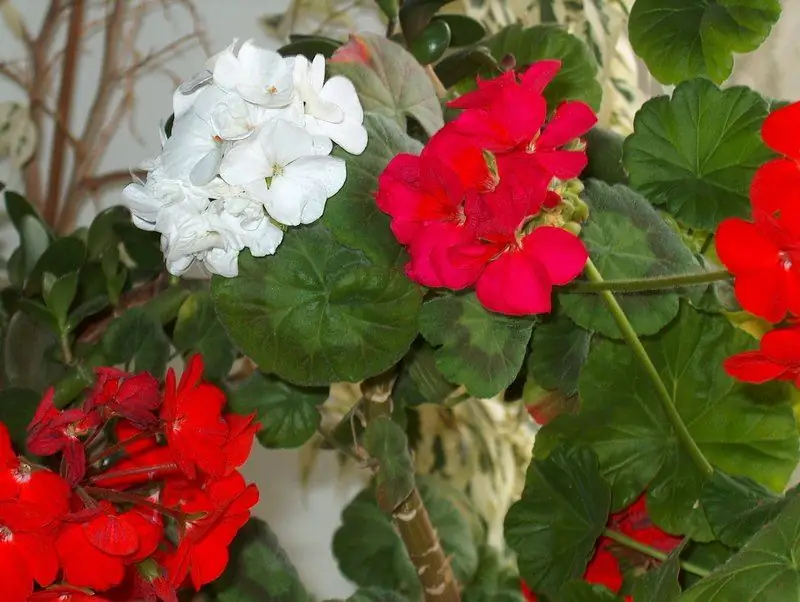
Table of contents:
- Author Bailey Albertson [email protected].
- Public 2023-12-17 12:53.
- Last modified 2025-01-23 12:41.
Why the rose doesn't bloom: saving the garden queen

Rose is the queen of the garden. But the queen is capricious and often refuses to bloom. Among the reasons for this unpleasant phenomenon are easily fixable and those that cause a lot of trouble. In any case, we must quickly deal with the reasons and try to help the plants.
Why Roses Don't Bloom
Not all summer residents plant roses: there is a lot of trouble with them. But if you get a good understanding of agricultural technology, the garden will become much more beautiful. But roses refuse to bloom for many reasons.
Young or old plants
A very young rose, the first year of life, and does not have to bloom. It should take root properly and gain strength, build up the root system. Moreover, if the first-year rose decides to bloom, it is better not to let her do this, to cut off the buds that have appeared.
A rose that is too old may not bloom either: after all, it's not for nothing that you have to transplant plants from time to time, and between these procedures it is necessary to carry out anti-aging pruning.

Bushes that are too old may refuse to bloom
Wrong landing site
Roses are heat-loving plants that do not tolerate drafts, so the location of the bush is of great importance. The rose may refuse to bloom in the shade, in the winds, in places with a close location of groundwater. Perhaps it should even have been planted on an artificial mound, and errors in landing technique can also lead to sad results.
Bad soil
Roses bloom well on breathable fertile soils. If the bush is planted in clay, you can not wait for flowering: when planting, it was necessary to refine the soil to a depth of at least half a meter, adding sand and various fertilizers.
Wild growth
Florists often grow varietal roses grafted onto wilds, usually on wild rose. In such cases, over time, many root shoots form around the bushes, weakening the main bush, taking away food and moisture from it. This can lead to a lack of flowering, so the shoots must be systematically removed.

Rosehip shoots often grow near grafted roses.
Incorrect cropping
Roses are pruned annually and according to the rules. Without this procedure, flowering worsens and fades from year to year. Too strong pruning depletes the bushes, superficial pruning does not allow the formation of new strong shoots. Pruning should be done with a sharp, clean pruning shear to prevent accidental infection.
Incorrect watering
Roses need a lot of moisture to bloom, without watering they bloom poorly, and in extreme cases they may not bloom at all. It is best to water the roses infrequently, but abundantly, to a great depth. After watering, it is necessary to loosen, or better - mulch the soil. Any bulk materials used in gardening are used as mulch.
Improper nutrition
Roses are a must, but the wrong balance of nutrients can inhibit flowering. So, with an excess of nitrogen, foliage will grow violently, and you can not wait for flowers.
Freezing or damping
Roses require shelter for the winter and timely gradual cleaning of the covering material in the spring. Shelter should be sufficient to survive the frost, but roses that are not opened in spring can quickly rot from damping and refuse to bloom.

In most regions, roses need to be covered for the winter, but be sure to open them in time.
Diseases and pests
Diseases and pests of roses are diverse, and if the plant is weakened, then we will not talk about any flowering. It is necessary to fight these phenomena in time, to spray the bushes with suitable preparations.
How to help plants
Having dealt with the reason for the lack of flowering, we must try to eliminate it. If no diseases are found, everything is in order with watering and feeding, the shoots are cut out, the planting site is perfect, but there are no flowers, you should try the following:
- cut out extra shoots: the thinnest, growing in the wrong direction, "blind", crooked;
- perform a stimulating pruning: the shoots are pruned over a strong leaf or bud;
- feed roses with complex fertilizer with a predominance of potassium; it would be nice to add humates.
Chances are, these simple steps will help you see flowers again.
Video: first aid in the absence of flowering roses
Reviews
The lack of flowering in roses is unpleasant, but usually fixable. It is important to understand the reason and try to fix the situation without delaying this issue.
Recommended:
How To Use Eggshells As Fertilizer (in The Garden, For Seedlings And Indoor Plants And Not Only) + Reviews

The properties of the eggshell, its beneficial effect on the soil, plants. Details on the use of shells as fertilizer in the garden, for seedlings and indoor flowers
Why Kalanchoe Does Not Bloom And What To Do About It

Why Kalanchoe does not bloom at home. Proper care for flowering
Why Peonies Don't Bloom And What To Do

Why peonies may not bloom. How it depends on the landing and weather. Can you help them
Why Geraniums Don't Bloom And What To Do To Help The Flower

For what reasons can geraniums refuse to bloom? How to create the necessary conditions for her. Is it easy to help a plant to bloom
Plants That Bloom Beautifully In Winter

5 plants that bloom beautifully and profusely in winter
